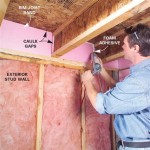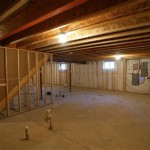How to Soundproof a Ceiling in a Basement
Soundproofing a basement ceiling can be a challenging but worthwhile project. By following the steps outlined below, you can effectively reduce noise levels from the basement and create a more peaceful living space.
1. Identify Noise Sources
Before implementing any soundproofing measures, it's crucial to identify the primary sources of noise. Common culprits include footfall from the floor above, machinery vibrations, or external noise penetrating through walls and windows. Pinpointing these sources will help you target your soundproofing efforts more effectively.
2. Choose Appropriate Soundproofing Materials
Various soundproofing materials are available, each with its characteristics and effectiveness. Acoustic ceiling tiles absorb and scatter sound waves, while soundproofing foam and fiberglass insulation help block and absorb noise. Consider the level of soundproofing required and the space constraints to select suitable materials.
3. Install Acoustic Ceiling Tiles
Acoustic ceiling tiles are suspended from the basement ceiling using a grid system. They feature sound-absorbing panels that reduce noise levels significantly. Ensure the tiles are installed correctly and cover the entire ceiling surface to maximize their effectiveness.
4. Use Soundproofing Foam or Fiberglass Insulation
Soundproofing foam and fiberglass insulation can be installed between ceiling joists or above the ceiling. They help block sound transmission by absorbing and dissipating sound energy. Choose a material with a high noise reduction coefficient (NRC) for optimal performance.
5. Seal Air Leaks
Air leaks around pipes, wires, and other openings can allow noise to penetrate the basement. Seal these leaks using caulk, weatherstripping, or acoustic sealant to minimize sound transmission.
6. Decouple the Ceiling from the Floor Above
Decoupling the ceiling from the floor above prevents sound vibrations from being transmitted through the structure. Use resilient channels or isolation clips between the ceiling joists and the floor above. These materials absorb vibrations and reduce noise transmission.
7. Install Sound Curtains or Draperies
Sound curtains or draperies can be hung along the perimeter of the basement ceiling. They help absorb and block sound waves, further reducing noise levels in the room.
8. Add Other Soundproofing Measures
Additional soundproofing measures, such as carpeting, rugs, and furniture, can help absorb and scatter sound waves. These elements create a more acoustically absorbent environment in the basement.
9. Test and Adjust
Once the soundproofing measures are implemented, test their effectiveness by generating noise from the floor above or other sources. Adjust the soundproofing materials or techniques as needed to achieve the desired noise reduction. Soundproofing is an iterative process that may require some trial and error to optimize results.
By following these steps and using appropriate soundproofing materials, you can effectively soundproof a basement ceiling and create a more peaceful and enjoyable living space.

Soundproofing Ceilings How To Soundproof A Ceiling

Nova Basement Remodeling Soundproofing In

Bungled Basement Soundproofing The Expert

How To Soundproof A Basement Ceiling

Botched Duplex Soundproofing The Expert

Soundproofing A Ceiling Unfinished Basement Ideas Cheap Renovations

House Works Your Questions On Soundproofing Insulating Furnace Replacement Ottawa Citizen

How To Soundproof Your Basement Ceiling Restoration By L B

Strategies For Soundproofing Ceilings Sound Acoustic Solutions

6 Cheapest Ways To Soundproof A Basement Ceiling
See Also








